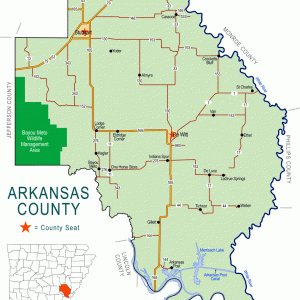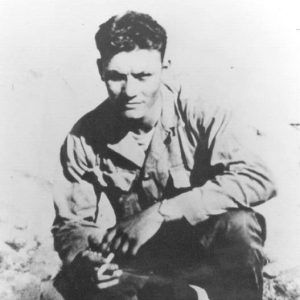calsfoundation@cals.org
Tichnor (Arkansas County)
Tichnor is an unincorporated community in Chester Township in Arkansas County. The area referred to as Little Prairie is bounded by the White River bottoms to the east, the Arkansas River bottoms on the south, and Dismal Swamp to the west (which is the dividing line between the southern end of Grand Prairie and Little Prairie), while Cypress Bayou bottoms provide the northern boundary. It is the location of the Tichnor Rice Dryer and Storage Building, listed on the National Register of Historic Places. The U.S. Army Corps of Engineers operates the nearby Lock No. 2 on the Arkansas Post Canal connecting the White and Arkansas Rivers. The dam controls the water level in Merrisach Lake. Tichnor residents Lloyd L. Burke and Gilbert G. Collier were awarded a Medal of Honor for their actions in the Korean War.
One of the nineteenth-century settlers to Little Prairie was Calvin Tichenor of Indiana. He was part owner of a store located on a Mississippi River steamboat that also worked the White River. In 1875, it stopped at Prairie Landing, situated near the confluence of LaGrue Bayou and the White River, and today’s Jack’s Bay.
In 1876, Tichenor moved to Arkansas and married Mary Frances “Molly” Bonner from Little Prairie. He gave up his interest in the floating mercantile business to open a community store and take up farming and logging in the area.
In the 1880s, there was no formal community designation for the area of Tichnor other than Little Prairie or sometimes the Hibbard Settlement, named after a local family, until Calvin Tichenor applied for the installation of a post office in his store. In 1881, he became the postmaster of the Hamlet post office, which was closed by November of that year. It reopened in 1887 under the name of Tichnor. The “e” was omitted from Calvin’s surname, and the misspelled name remained. Calvin Tichenor died in Indiana in 1898, and his wife died in 1930. Descendants of the family were still residing in Arkansas County in the twenty-first century.
The soil of Little Prairie is ideal for cultivation of rice, soybeans, and other crops, and Tichnor never lost its early character as a farming community. It continues to be identified as such in the twenty-first century, with the addition of recreational hunting and fishing opportunities. The Tichnor area, which included farm fields as well as wooded areas near the Arkansas and White Rivers, had a few stores for inhabitants but never had a true commercial area or concentrated housing.
Little Prairie had long been considered a productive hunting and fishing area, and the creation of the White River Wildlife Refuge in 1935 boosted the numbers of recreational hunters, fishing enthusiasts, and wildlife observers. Improved roads and bridges built by the Civilian Conservation Corps (CCC) offered enhanced routes to the Tichnor area. Local oxbow lakes were popular destinations for ducks and Canada geese, and many hunters traveled to Gillett (Arkansas County), five miles west of Tichnor, via railroad in the 1920s.
The U.S. Army Corps of Engineers began construction on the Arkansas River lock and dam system in the 1960s, which brought an influx of new residents and commerce to Tichnor and Gillett. The population eventually decreased because of the termination of dam construction and because of farm mechanization and modernization. Agricultural laborers migrated to other areas for work, while many family farms were sold or rented to tenant farmers.
The principal structure in the community is the Tichnor Rice Dryer, constructed in 1955 for rice grower Woodrow Turner. The plant was initially built for Turner’s personal use and contained six bins and one dryer. Other farmers in the area had to take their grain approximately five miles west into Gillett, then remain in line for days until they could dry their rice. This situation led to Turner forming a corporation, which allowed his neighbors to utilize his bins and dryer. By 1956, he had added fifty-six more bins and a second dryer to the east of the original building. The sign reminding passersby to “Eat, buy, sell and grow rice” symbolizes the positive economic impact of Arkansas as a major exporter of rice.
For additional information:
Cover, John W. “A Community Named for Calvin Tichenor: Tichnor, Arkansas 72166.” Grand Prairie Historical Society Bulletin 44 (October 2001): 12–17.
“Tichnor Rice Dryer and Storage Building.” National Register of Historic Places registration form. On file at Arkansas Historic Preservation Program, Little Rock, Arkansas. Online at https://www.arkansasheritage.com/arkansas-historic-preservation-program (accessed November 7, 2025).
Glenn Mosenthin
Grand Prairie Historical Society
 Arkansas County Map
Arkansas County Map  Lloyd L. Burke Plaque
Lloyd L. Burke Plaque  Gilbert Georgie Collier
Gilbert Georgie Collier 



Comments
No comments on this entry yet.